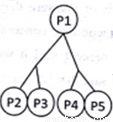题目内容
Batteries can power anything from small sensors to large systems. While scientists are finding ways to make them smaller but even more powerful, problems can arise when these batteries are much larger and heavier than the devices themselves. University of Missouri(MU) researchers are developing a nuclear energy source that is smaller, lighter and more efficient.
“To provide enough power, we need certain methods with high energy density(密度)”, said Jae Kwon, assistant professor of electrical and computer engineering at MU. “The radioisotope(放射性同位素) battery can provide power density that is much higher than chemical batteries.”
Kwon and his research team have been working on building a small nuclear battery, presently the size and thickness of a penny, intended to power various micro / nanoelectromechanical systems (M/NEMS). Although nuclear batteries can cause concerns, Kwon said they are safe.
“People hear the word ‘nuclear’ and think of something very dangerous,” he said, “However, nuclear power sources have already been safely powering a variety of devices, such as pace-makers, space satellites and underwater systems.”
His new idea is not only in the battery’s size, but also in its semiconductor(半导体). Kwon’s battery uses a liquid semiconductor rather than a solid semiconductor.
“The key part of using a radioactive battery is that when you harvest the energy, part of the radiation energy can damage the lattice structure of the solid semiconductor,” Kwon said, “By using a liquid semiconductor, we believe we can minimize that problem.”
Together with J. David Robertson, chemistry professor and associate director of the MU Research Reactor, Kwon is working to build and test the battery. In the future, they hope to increase the battery’s power, shrink its size and try with various other materials. Kwon said that battery could be thinner than the thickness of human hair.
1.Which of the following is true of Jae Kwon?
A. He teaches chemistry at MU.
B. He is working on a nuclear energy source.
C. He developed a chemical battery.
D. He made a breakthrough in computer engineering.
2.Jae Kwon gave examples in Paragraph 4_________.
A. to introduce nuclear batteries can be safely used
B. to show chemical batteries are widely applied
C. to introduce various energy sources
D. to describe a nuclear-powered system
3.Liquid semiconductor is used to _________.
A. get rid of the radioactive waste
B. test the power of nuclear batteries.
C. reduce the damage to lattice structure.
D. decrease the size of nuclear batteries
 小学课堂作业系列答案
小学课堂作业系列答案 金博士一点全通系列答案
金博士一点全通系列答案

 B.
B. 
 D.
D. 